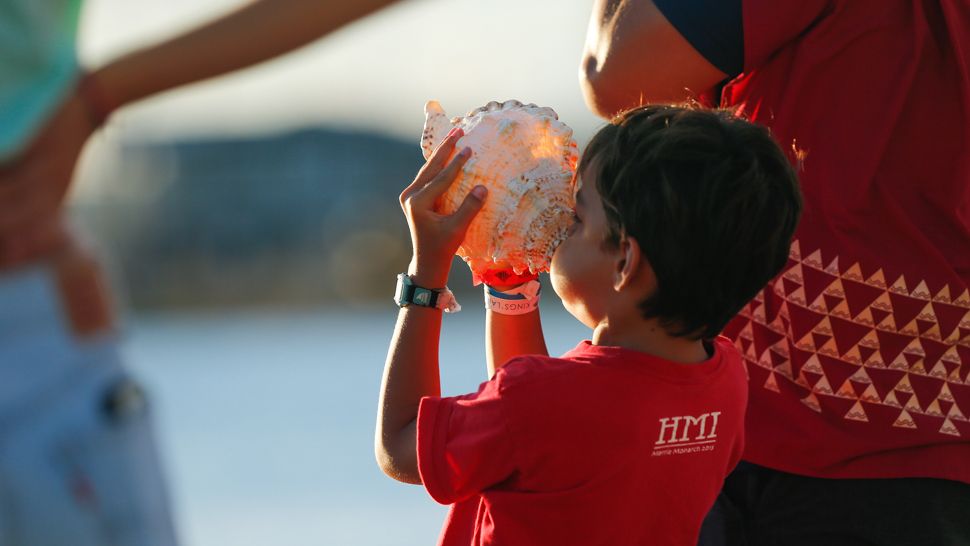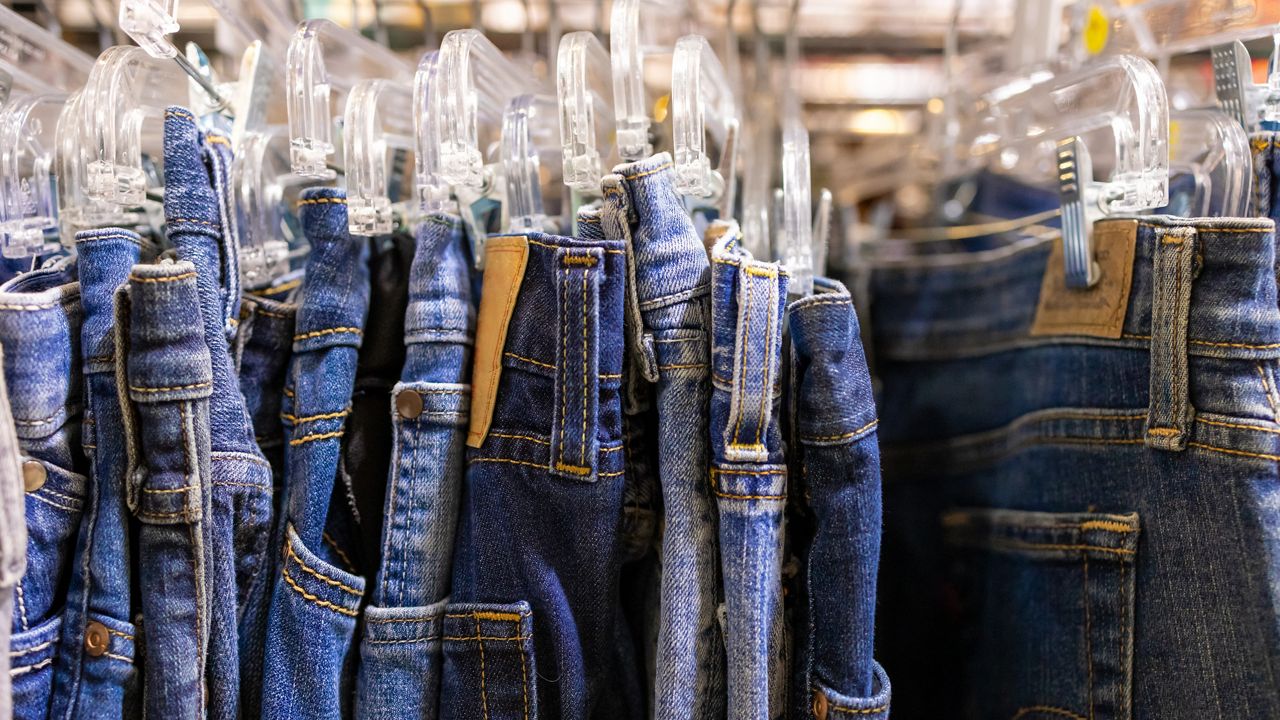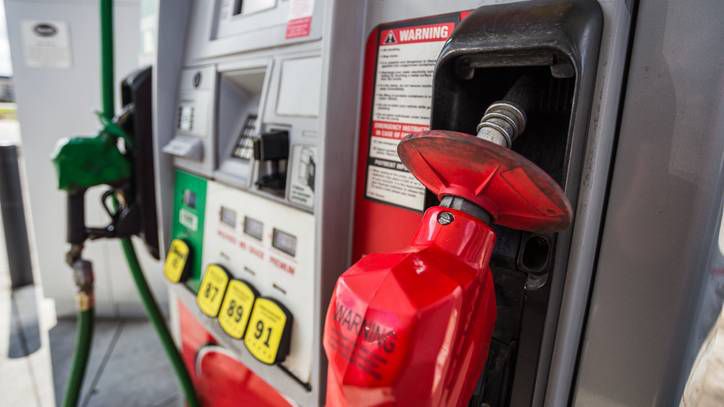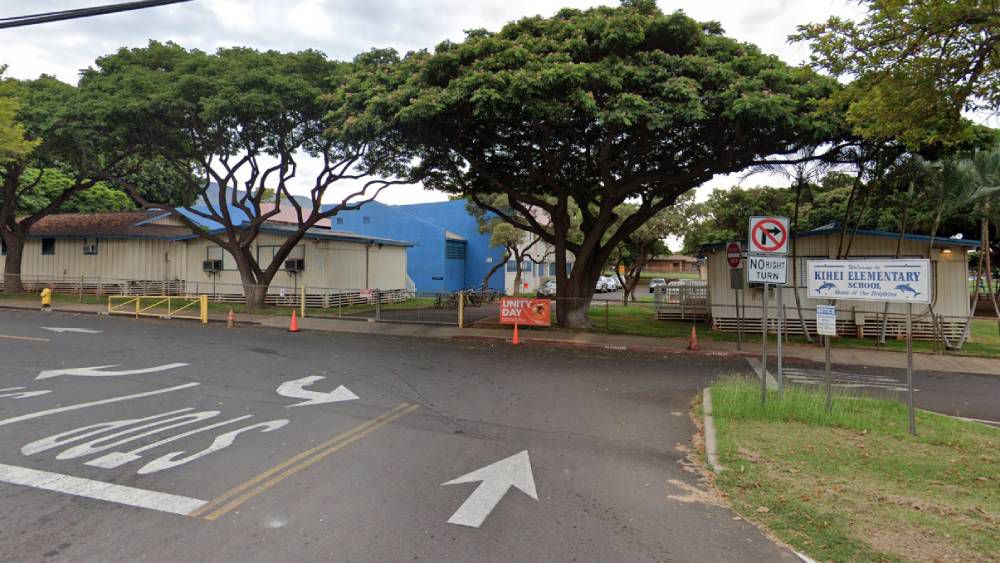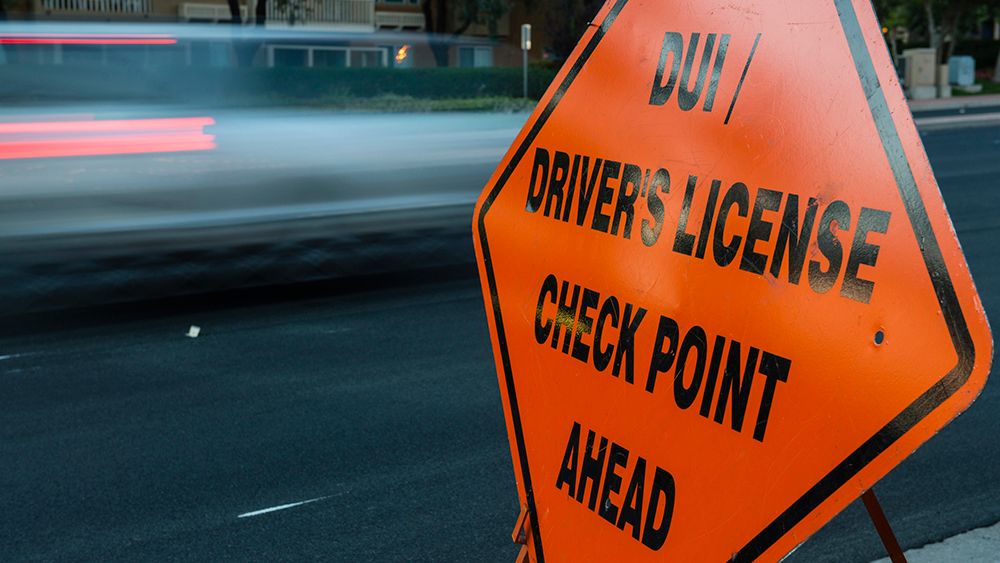HONOLULU — The voyaging canoes, Hōkūle‘a and Hikianalia, returned to O‘ahu on the evening of June 16 following their two-month, 5,000-mile roundtrip journey between Hawai‘i and Tahiti.
Departing O‘ahu for Hilo on April 11, the crews waited for good weather before then leaving Hilo on April 18. They made landfall on the French Polynesian Tuamotu Island of Rangiroa 18 days later.
On the Kealaikahiki Voyage, the two voyaging canoes traveled the ancient sea road of Kealaikahiki to Tahiti with the goal of nurturing the next generation of leaders and participating in a cultural ceremony seeking permission for next year’s Moananuiākea Voyage.
“When we began to map out the idea of the Moananuiākea Voyage, we knew we had to start by returning to our ancestral homeland of Tahiti to deepen our understanding of our voyaging traditions and the ancient sea road of Kealaikahiki,” said Nainoa Thompson, CEO of the Polynesian Voyaging Society, in a release. “The voyage was also an important step toward ensuring the future of voyaging. Despite the many challenges, the young navigators and crew demonstrated that they have the skills, values and commitment to ensure that voyaging never goes extinct in Polynesia again.”
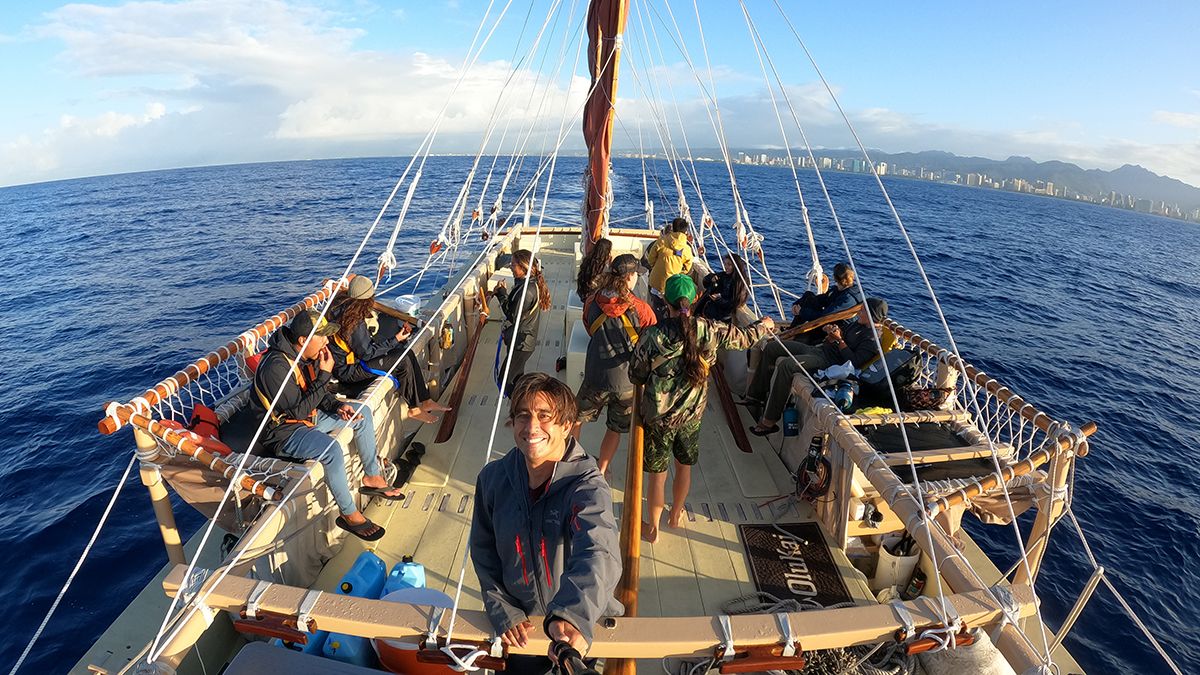
Lehua Kamalu became the first woman to captain and navigate Hōkūle‘a from Hawaii to Tahiti. And aboard the Hikianalia, Kaniela Lyman-Mersereau and Kaleo Wong trained under Pwo navigator Bruce Blankenfeld. There were other crew members in training as well.
Kamehameha Schools educator, Christopher James Ku‘uhaku Blake, is someone who understands the importance of raising the next generation in school and on the wa‘a, or canoe. He has taught full-time at Kamehameha Schools since 2000 and is currently the director of Pacific Innovations within the Department of Teaching and Learning Innovations, where he teaches haumana, his students, “our history and our past as Native Hawaiians, and of our culture of lāhui (people), taking a look at how we can shape those things, the things we’ve learned in the past, into the present, to help us shape our future,” he explained.
Blake’s relationship with the Polynesian Voyaging Society began in 2012 as he was developing Hawaiian culture-based education on campus and as PVS was preparing for its 2014 Mālama Honua circumnavigation of the world. This led him to develop “Mālama Honua,” a class that looks at sustainability and sustainable practices in the islands, as well as around the world. It essentially became an extension of the Mālama Honua voyage.
Also a kumu of celestial navigation, Blake is an instructor for “Papa Kilo Hōkū,” a class that looks at the stars and non-instrument navigation. A close relationship with PVS began, and since the first class in 2017, several students have continued their connection with PVS. Four of them have been on the crew with Blake aboard Hōkūle‘a.
In 2016, Blake joined the crew on leg #18 of the Mālama Honua Voyage as Hōkūle‘a traveled from Cuba into Florida. The crew stopped at NASA, connecting with the family of the late Lacy Veach, a former NASA astronaut. Veach was also a close friend to Nainoa Thompson and the one who had inspired and challenged Thompson to take the canoe around the world to have a true understanding of what it was like, explained Blake.
The answer to that challenge was the Mālama Honua Voyage.
Before Veach’s passing in 1995 due to cancer, Thompson said, “He told me, ‘Nainoa, you can never believe the beauty of island Earth until you see it in its entirety from space.’” Thompson said Veach was greatly concerned over “the imbalance between human needs and the limited resources of our small planet,” and saw the great challenges ahead.
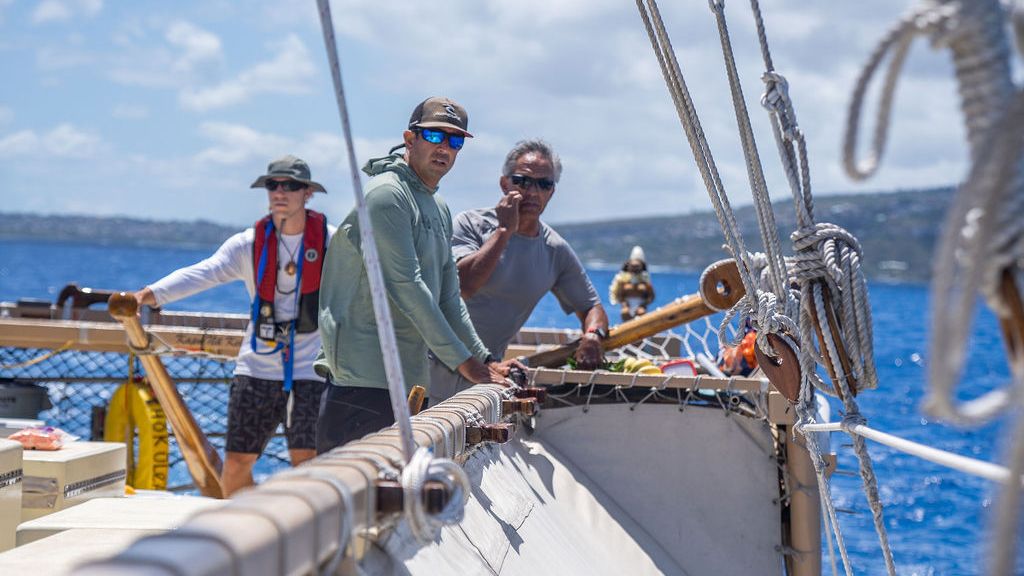
“Keala” is the pathway, “i kahiki” is “to Kahiki” or “to faraway places.”
“Every island has its own Kealaikahiki,” shared Blake. “But the channel between Kaho‘olawe and Lana‘i is called ‘Kealaikahiki,’ and right there at Kealaikahiki Point on Kaho‘olawe, there’s an actual star compass. That’s believed to be one of our pathways to Tahiti, our ancient homeland.”
Blake explained this ancient sea road has been traveled a multitude of times, not just once. “There was a time when it was believed that our kūpuna, our ancestors, just drifted around the Pacific,” said Blake. “That’s the genesis of Hōkūle‘a, of the idea of Ben Finney, Tommy Holmes and Herb Kane, the founders of the Polynesian Voyaging Society, to help bring credence to the abilities of our ancestors in terms of skillful navigation of our Moananuiākea, our Pacific homeland.”
Unlike the Western idea that the ocean separates countries, Blake brings up Moananuiākea, which can be translated to “ever-expansive oceans.” He says any land, whether an island or body of land that touches the Pacific Ocean, is a part of Moananuiākea.
“The idea is, the oceans never separated us. It’s the oceans that connect us,” he said. “These sea roads connect, not only between Hawai‘i and Tahiti, Samoa … All of these places are littered with on-ramps and off-ramps all over the Pacific that our kūpuna knew. These navigators were able to go forth and purposefully navigate these pathways, multiple times, whenever they wanted to.”
On May 1, 1976, Hōkūle‘a undertook her first ocean voyage with venerated Master Navigator Pius Mau Piailug using the elements of nature as his compass. The crew sailed from Honolua Bay on Maui to Tahiti in 34 days.
“He’s never seen this pathway before,” said Blake, referring to Piailug, who guided the crew of 17. “He used his skills of observation and knowledge of what he would see in order to get us to that spot. The navigation practice was tightly held, so we’re very fortunate that he decided and went out of his way to break some of those rules in order to bring that knowledge to us here in Hawai‘i. So since 1976, for over 46 years, Hōkūle‘a has been sailing around the world, and throughout our Pacific. It’s an inspiration to all.”
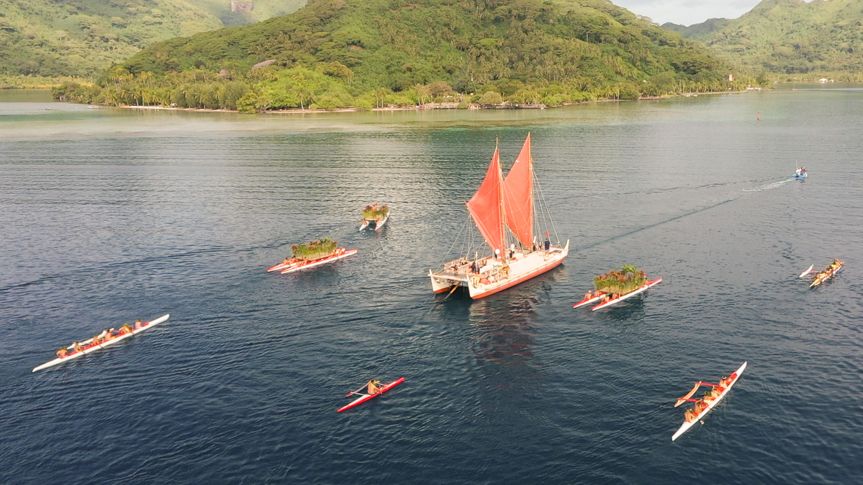
Blake explained Moananuiākea using the Tahitian phrase, “Te Fe‘e Nui” or “The Large Octopus.” He said the po‘o or head of the octopus is at Raiatea at Marae Taputapuatea, which is a sacred site, and its tentacles reach out to the boundaries of Polynesia to Hawai‘i, Rapa Nui (Easter Island) and Aotearoa (New Zealand).
It’s at this site that the PVS crew took part in sacred ceremonies during which Hōkūle‘a and Hikianalia were “consecrated as sacred vessels of heritage to carry the mana (spirit) of Polynesia throughout the vast Pacific on the Moananuiākea Voyage, which will start in the spring of next year,” according to a PVS release.
Blake explains that the intent is important, not just physically, but spiritually, “making sure we have those continued connections in order to ensure that the things we’re doing are done in the right way, to open the pathways for us to travel.
“The idea for us, we sail for those who have come before us. We sail for those who are with us now. And sail for those who are going to follow in our footsteps. The past, present, future are interconnected and never separated,” he adds.
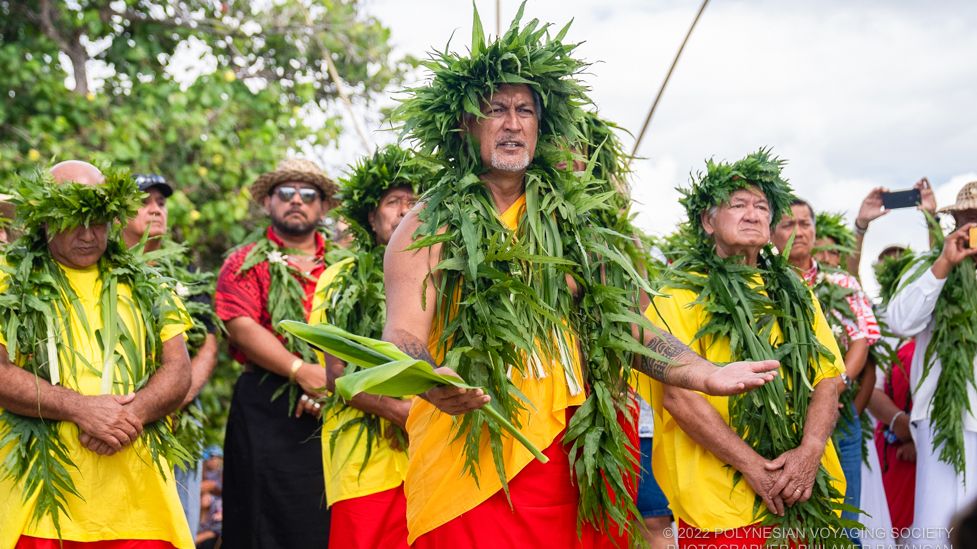
So says Blake, who witnessed communities welcoming Hōkūle‘a and her crew on its Mālama Honua Voyage to more than 150 ports and 18 nations. From the family who sailed their boat for hours to meet the crew in Florida and followed them, to Hawai‘i transplants scattered across the globe, to like-minded groups and individuals seeking a sustainable path in their communities and for the world, to eager young minds in classrooms virtually connecting with crew members, and many others.
The intent of the Mālama Honua Voyage was to bring attention to the importance of caring for our Earth, and Hōkūle‘a and her crew surely accomplished that.
“There are so many pockets of excellence already happening in many of these communities,” said Blake. “Hōkūle‘a is not only a magnet. It’s also a spotlight.” Blake believes there is greatness happening in all communities, not just the ones Hōkūle‘a visits, but in other places as well. “How might we be able to connect these like-minded individuals to be able to make a bigger impact in what they’re doing and let them know that the work they do matters?
“The ability to reach beyond boundaries to be a change agent, even if it’s just in your family … If you’re able to amplify that into communities, large groups, that’s the kind of thing we hope to inspire any voyager or any other participant to do,” added Blake.
While in French Polynesia on the Kealaikahiki Voyage, Thompson was one of the conveners of the Blue Climate Summit, a meeting of more than 200 scientists, policymakers, government representatives, business and financial experts, community leaders, and environmental and youth activists. The focus was to accelerate ocean-related solutions to climate change. Thompson and crew leaders also joined French Polynesia President Edouard Fritch to sign a Joint Declaration for to protect the oceans by French Polynesia and PVS.
In March 2007, Pius Mau Piailug initiated five Native Hawaiian navigators for the time into Pwo as master navigators on the island of Satawal. They were Nainoa Thompson, Bruce Blankenfeld, Chad Baybayan, Shorty Bertelmann and Chadd Paishon.
Thompson and Blankenfeld, and PVS as a whole, understand the importance of raising the next generation of leaders — captains, navigators, as well as stewards who will mālama (care for) the planet. And with the passing of Baybayan last year, Blake points out the challenging need to always find individuals who can answer the call.
Over the years, Thompson has been a mentor to many. “He has the ability to put thoughts into your head, and put some burdens upon you,” said Blake. “Through many of the discussions that we’re able to have with him, as a mentor he’s always saying those kinds of things to push you in a different direction that you didn’t really realize.
“The idea is to inspire them (youths) to take their own journey, to be leaders in whatever they’re doing, whether it’s going to be on the wa‘a, if it’s going to be on land, or whether it’s going to be through their families or communities,” said Blake. Everyone faces different situations and things come up, “but knowing that the door is always open and the ways we can continue to help them when needed is what the main thing is. As long as they’re continuing to do right by what their goals are, and what’s right by their ‘ohana or communities, I think then it’s a definite success.”
In 2012, when Blake went on his initial sail with PVS in Māmala Bay for Kamehameha, he didn’t think it would develop into anything beyond that. But he believes it set the foundation for where he is today. In one way or another, the same can be said for everyone who has come into contact with PVS and Hōkūle‘a.
“I’m a firm believer that the experiences that you have, you’re ready to learn with only the things you’re ready to learn,” he said. “Oftentimes, through chance, through experiences, you set on your journey. The interactions I’ve had and the guidance I’ve received from the many people I’ve been working with including volunteers and those with PVS, have guided me to where I am today, and I’m fortunate to teach some haumana, to teach a course to help to continue to perpetuate this kind of tradition.”
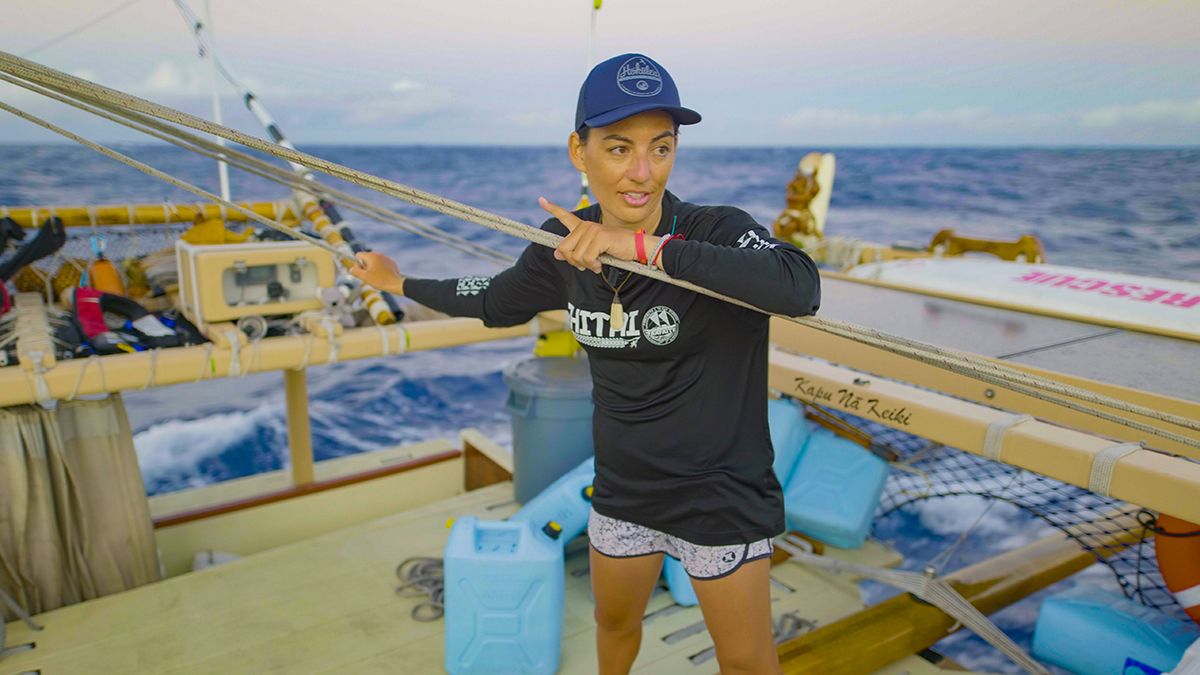
Lehua Kamalu was a student of Blake’s, who witnessed her skill while aboard Hōkūle‘a. At one point during the voyage, Hōkūle‘a had been pushed off course due to the winds and the crew had to work hard to get back on course.
“She estimated exactly where we were when we made the turn, right on the mark,” said Blake. “The greatness that Lehua as a navigator shows, because she wasn’t writing things down, and it was all being done in her head and through her experience. That’s a testament to her skill and expertise, and attention to detail shown throughout the journey. She is an amazing individual, very driven. And I think the inspiration for Lehua is the understanding of her being, I believe, the first female captain and navigator to be able to go through Kealakaikahiki like that.”
Blake said PVS leadership understands the importance of succession, as well as “trying to make sure that there are going to be people who are not only skilled and adequately trained, but who can also thrive in those kinds of situations.”
On the Hikianalia, Kaniela Lyman-Mersereau was the captain and Kaleo Wong, the navigator. The two were also on the Mālama Honua voyage. Blake said Hikianalia and her crew had a challenging job as escort because while Hōkūle‘a could set the route, Hikianalia had to follow.
“We (Hōkūle‘a) have an idea of what we’re going to be doing and Hikianalia is a totally different vessel,” explained Blake. “They had to navigate off of us while having to keep a certain distance through changing conditions. Hikianalia’s crew, especially Kaniela and Kaleo, did an amazing job in order to do what its job was, which was continuing to support Hōkūle‘a.”
Upon their return home, Hōkūle‘a and Hikianalia will undergo maintenance, deservedly so after traveling 5,000 miles from Hawai‘i to Tahiti and back. Then, from August through the end of the year, Blake says Thompson and Blankenfeld will mahalo the communities for their support and request their permission for the upcoming journey by holding sails, school engagements, and connecting with schools and communities to share the purpose of next year’s journey.
A third voyagning canoe, Hawai‘iloa, will be planning to join the two wa‘a when they head to Alaska in the spring. Blake says Hōkūle‘a and Hawai‘iloa will likely be shipped via container to Seattle because they have no engines, while Hikianalia sails.
According to Blake, none of the PVS volunteers know whether they will be asked to be part of the ocean or land crew. Everyone is hopeful, but part of the decision will also come with the support of family and employers.
“If I’m fortunate enough to be a part of it, whether it’s on the wa‘a or on land crew, whether from a distance, the idea that you’re giving up what you can for the greater good, is really important,” said Blake. He says he’s been fortunate with the support of his family and Kamehameha Schools.
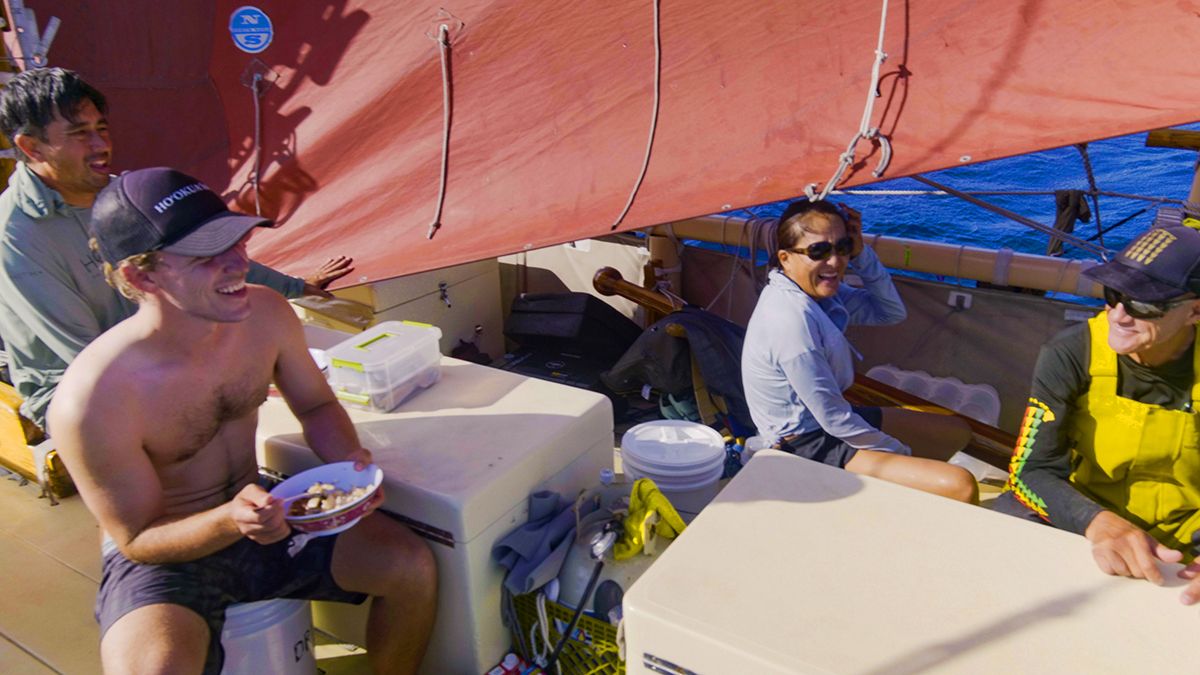
Being a part of the crew is a commitment and an understanding of the journey — physically, mentally, psychologically — you’re about to embark on.
“The building of pilina, connection or relationship, and camaraderie are huge,” explained Blake. “The thing that binds us together is our understanding of what our goals are. Nainoa talks about it doesn’t matter if we actually find the island. It actually matters how we take care of each other when we’re doing it.”
He adds, “When you’re on the wa‘a, you’re in that enclosed space. The camaraderie that you build with your crew is amazing. It’s hard to explain. If you’re able to replicate that in your spheres of influence, then I think that will help the world to be a better place, which is the overall goal.”
Being on the wa‘a and not seeing land in any direction can be a scary experience for some. But there are also moments of great beauty, self-reflection and opportunities to deepen one’s gratitude.
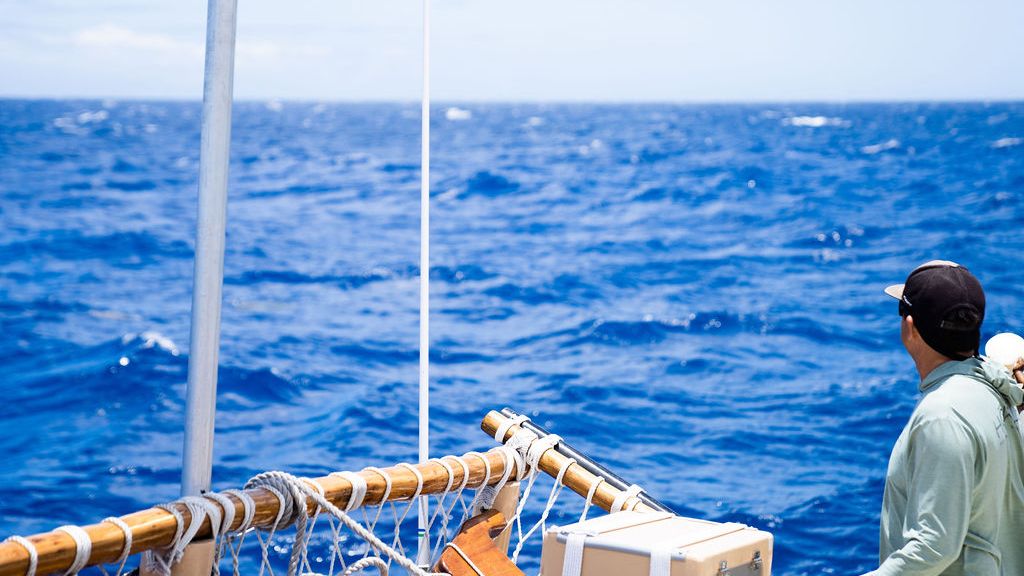
“When you’re on the wa‘a, some say you disconnect. But you actually reconnect,” shared Blake. He speaks about Hōkūpa‘a (the North Star) sinking in the horizon and the Southern Cross, or Hanai a ka Mālama, beginning to rise. Seeing varying wave patterns, the different sunrises each morning. He witnessed amazing sunsets with “crazy robust colors I’ve never seen before.” Blake adds, “Whether it’s the vividness of the rainbows that we saw periodically, the ability to see stars that you just can’t see when you’re near land … you know, everything is just brighter.”
Blake doesn’t speak of a specific source of inspiration, but reflects on a personal tie to Kualoa, and more so, Kānehoalani, which is the mauna or the peak of the Ko‘olau mountain range. On the morning of his departure to join the Kealaikahiki Voyage, he stopped to welcome the sunrise there. He thought of his kūpuna, his connection to this area of Kualoa.
“I don’t believe it’s by chance,” he said. “I’m grateful for the experiences I’ve had, the people I’ve met, not just through voyaging but through life. And to know the history of our lāhui, our people, that we are descendants of the greatest navigators that the world has ever known. To share that narrative with Native Hawaiian learners, in school and other places, and have them truly understand the greatness of our kūpuna and the knowledge they have salted away for us, in order for us to receive when the time is right. I’m not sure who put me on this path, but I’m glad I have the support of my ancestors and my family. I’m glad I’m on this path for sure.”
Sarah Yamanaka is a digital journalist for Spectrum News Hawaii. Read more of her stories here.





